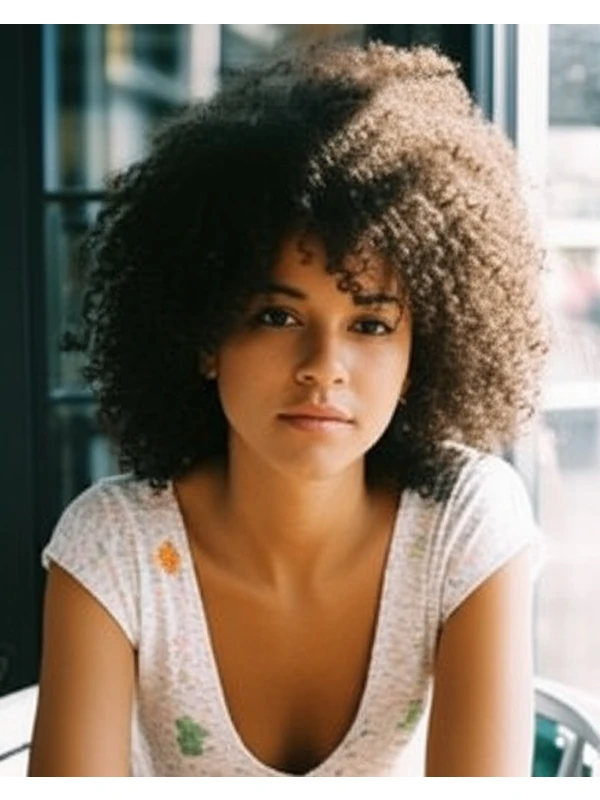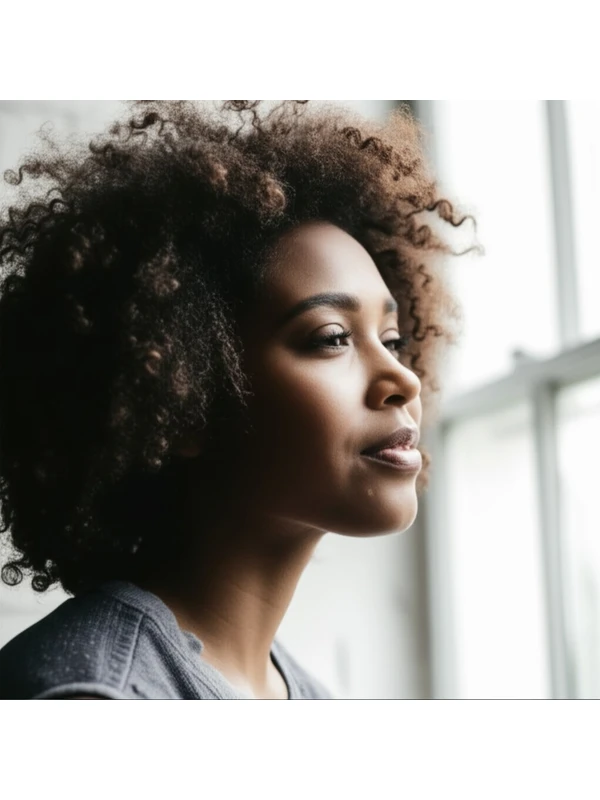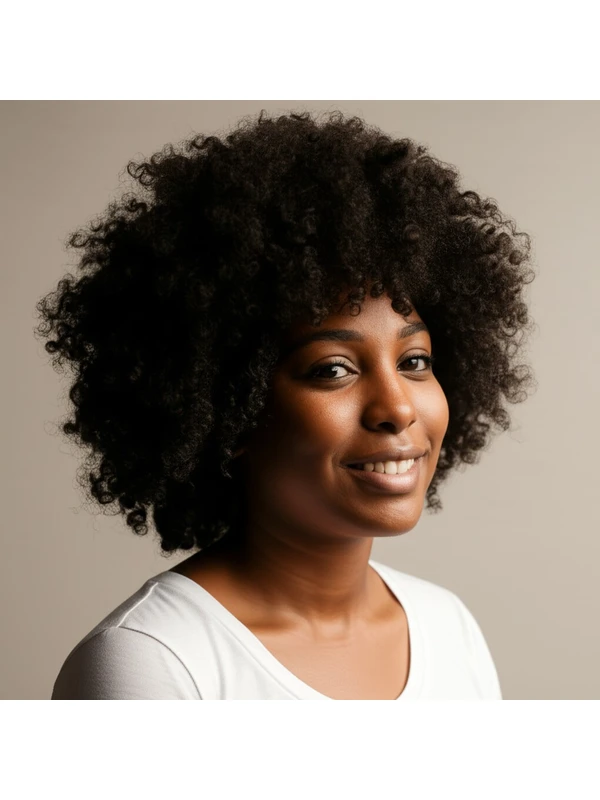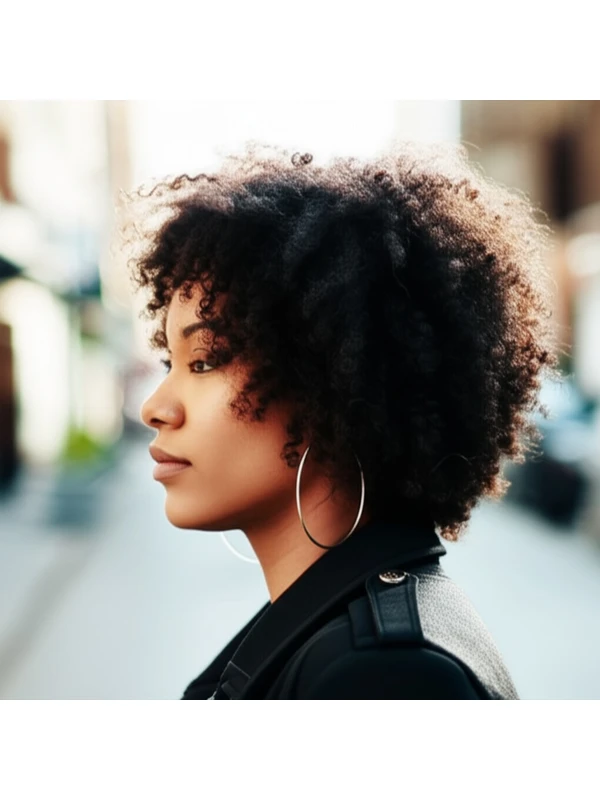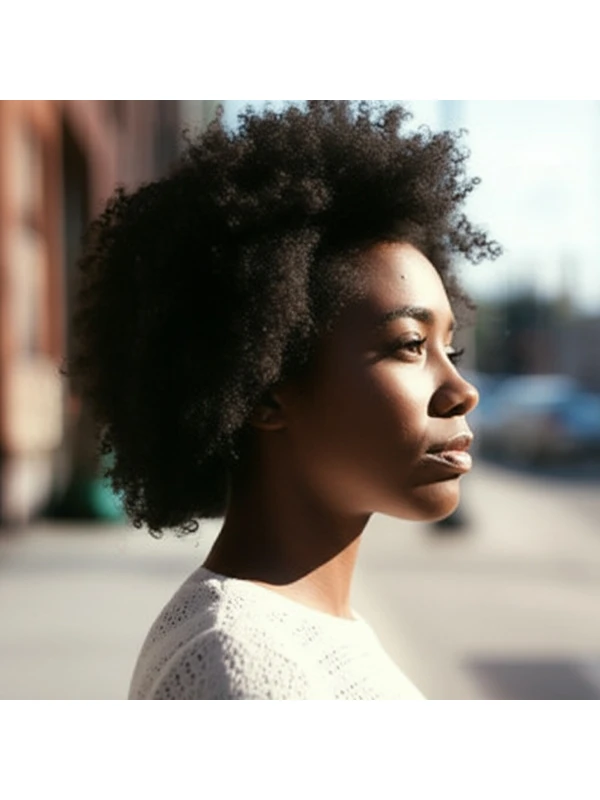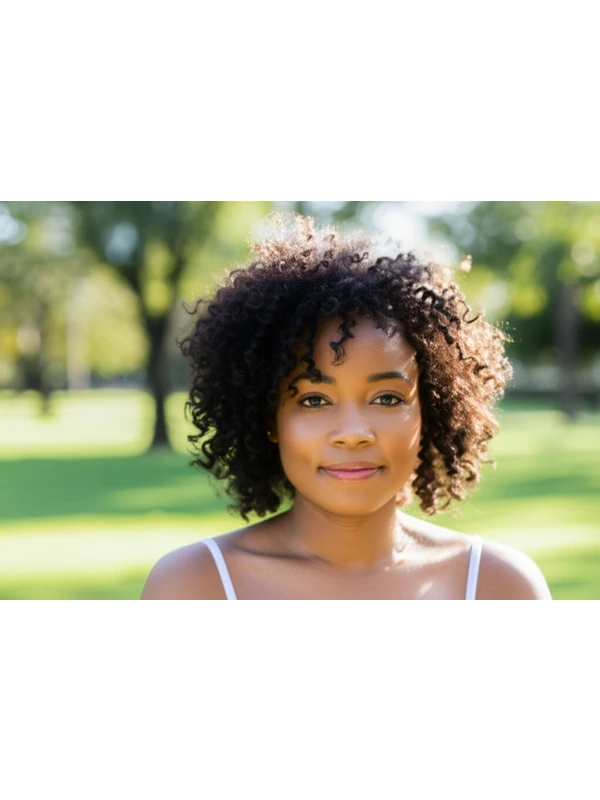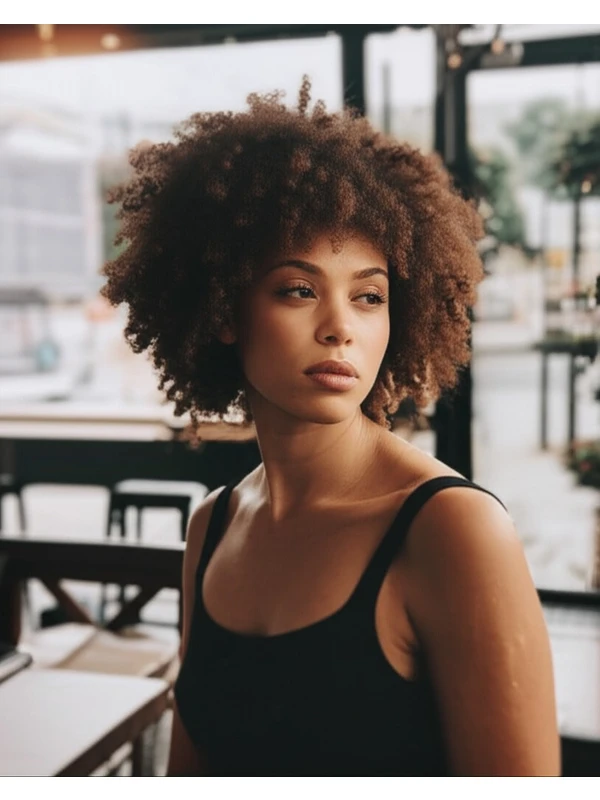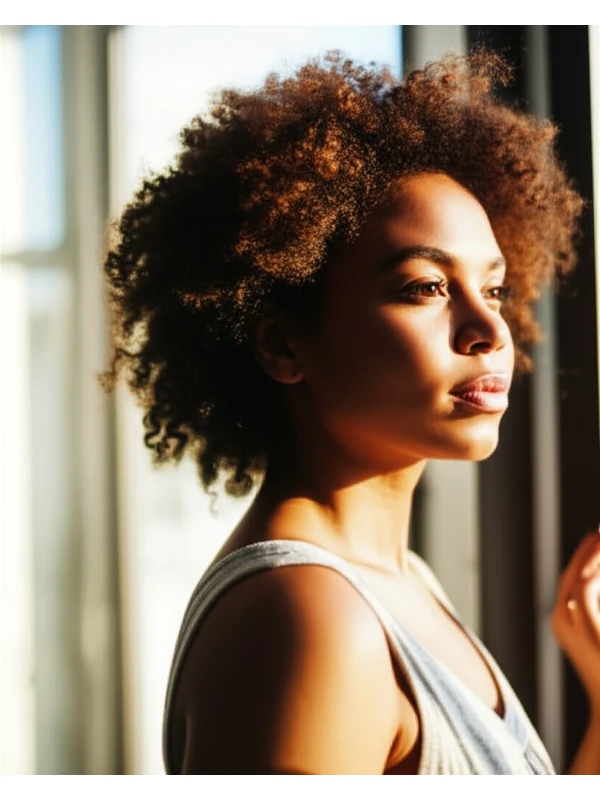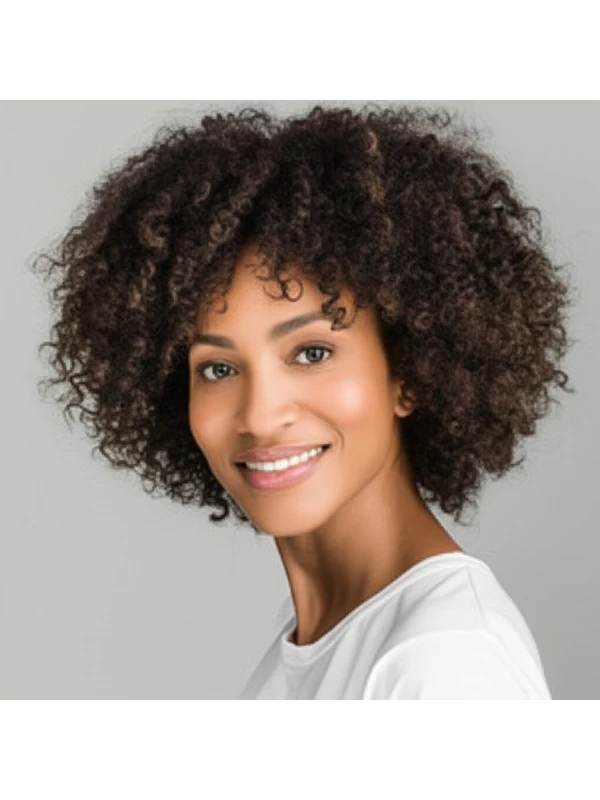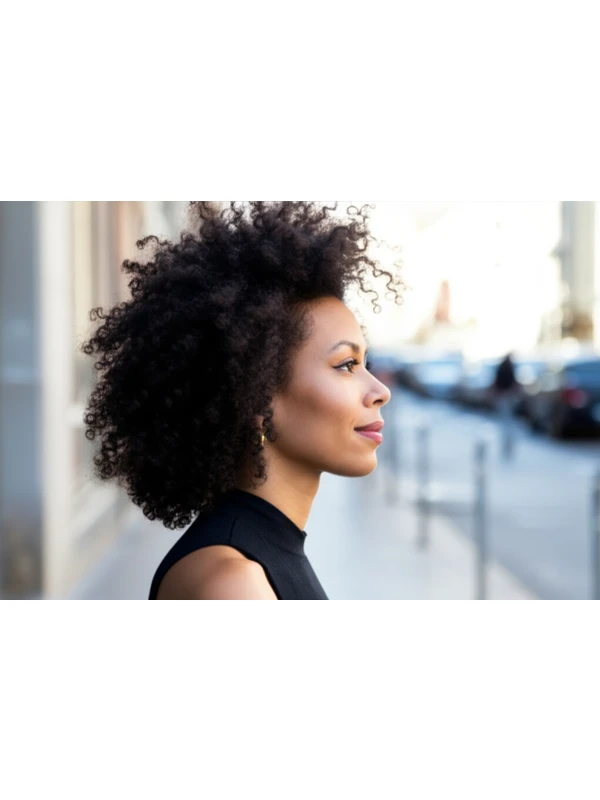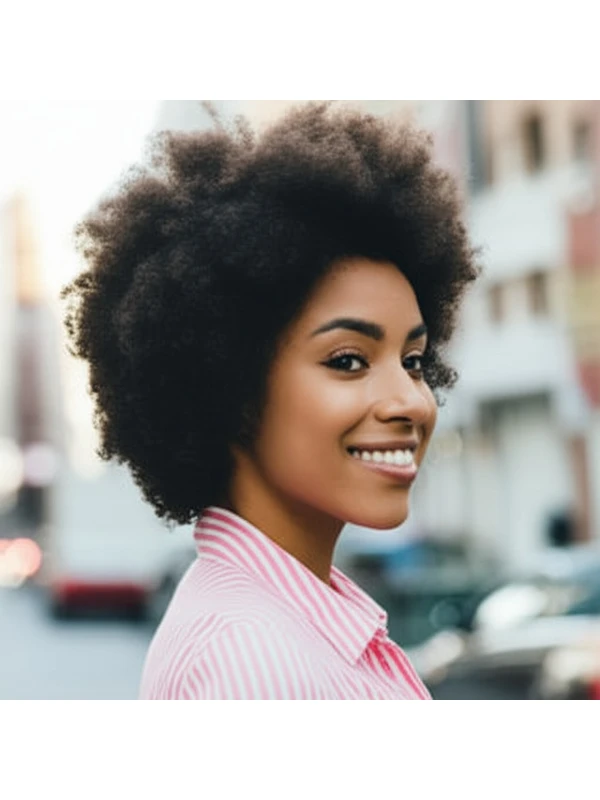#The Afro: A Celebration of Natural Texture
The afro is more than just a hairstyle; it’s an iconic statement rooted in Black history and culture. This guide will break down everything you need to know about embracing the beautiful, voluminous afro – from its origins to how to style and maintain it perfectly for you.
#1) Background & Definition: The Shape of Pride
The afro is a hairstyle characterized by naturally curly or coiled hair that’s allowed to grow out in a rounded shape. Think of it as a sphere blossoming from the head! It gained immense popularity during the Civil Rights Movement, representing Black pride and natural beauty.
- Cut Geometry: The classic afro isn't about layers; it’s about consistent length all around the perimeter, creating that signature roundness.
- Key Features: Full volume at the crown, a defined shape (often spherical or slightly tapered), and showcasing your hair's natural curl pattern.
- Typical Length Ranges: A "short" afro might be 2-4 inches in diameter; medium afros range from 5-8 inches, while larger afros can reach upwards of 10+ inches.
- Alternative Names: Natural, ‘fro, rounded shape, dome (though this is less common and often refers to a very short afro).
#2) Face Shape Fit: Finding Your Perfect Balance
The afro's volume can be incredibly flattering on many face shapes when styled correctly. Here’s how it works with different features:
- Oval: Lucky you! An oval face is considered the most balanced, so almost any afro size and shape will look amazing. Consider a slightly tapered top for added height.
- Fringe/Bang Options: Side-swept bangs can soften the edges.
- Round: A large, well-shaped afro adds verticality, visually slimming a round face. Avoid overly wide or flat afros that emphasize width.
- Fringe/Bang Options: Avoid blunt bangs; opt for soft, wispy fringe to elongate the face.
- Square: The softness of an afro can soften strong jawlines and angular features. A slightly asymmetrical shape (a subtle side part) adds visual interest.
- Fringe/Bang Options: A textured, piece-y fringe can break up a square face’s angles.
- Heart: An afro's volume balances a wider forehead and pointed chin. Keep the sides relatively even to avoid drawing attention downwards.
- Fringe/Bang Options: Long, side-swept bangs are very flattering.
- Diamond: The fullness of an afro softens diamond shapes by minimizing their sharp angles. A slightly off-center part can add asymmetry and interest.
- Fringe/Bang Options: Soft, face-framing layers that blend into the afro work well.
- Oblong (Long): Avoid extremely tall afros as they will elongate your face further. Opt for a more rounded shape with slightly shorter sides to add width.
- Fringe/Bang Options: A full fringe can help shorten an oblong face, but ensure it doesn't overwhelm smaller features.
#3) Body Proportions & Height Guidance: Styling for Your Silhouette
The afro’s volume significantly impacts your overall silhouette. Consider these factors:
- Petite: A smaller to medium-sized afro is generally more flattering than a massive one, which can overpower a petite frame.
- Average Height: You have the most flexibility! Experiment with different sizes and shapes.
- Tall: A larger afro adds visual balance.
- Narrow Shoulders: A wider afro will visually broaden your shoulders, creating more proportion.
- Broad Shoulders: A slightly tapered or asymmetrical afro can help soften broad shoulders.
- Neck Length (Short/Average/Long): For shorter necks, avoid extremely tall afros that might make you feel crowded. Longer necks can handle more height and volume.
#4) Works Best With Hair Types & Densities: Embracing Your Texture
The afro can be achieved with various hair types, but the approach differs significantly.
- Straight/Wavy: These textures require significant styling effort to create a rounded shape. Setting techniques (pin curls, flexi-rods) are essential for achieving volume and curl definition.
- Curly: Naturally curly hair is a great foundation! The afro will be easier to achieve with good curl pattern definition.
- Coily: Coils naturally have the most volume and structure, making them ideal for afros. Moisture is key to prevent dryness and brittleness.
- Fine Hair: Requires strategic product use (lightweight products) and careful styling to avoid flatness. Volume-boosting techniques are vital.
- Medium/Thick Hair: These densities offer the easiest canvas for an afro, naturally possessing volume and shape.
- Density Tips: Less dense hair might need teasing or volumizing products at the roots. Denser hair may benefit from thinning out the crown to reduce bulkiness.
- Shrinkage (Curls/Coils): Remember that curly and coily hair shrinks significantly when dry! Account for this when determining length – a 6-inch afro might appear much shorter once fully dried.
#5) Styling Variations: From Casual Cool to Evening Elegance
The beauty of the afro lies in its versatility.
- Sleek vs Textured: A sleek afro uses smoothing techniques and products for a polished look. A textured afro embraces natural curl definition with minimal manipulation.
- Middle vs Side Part: A middle part offers symmetry, while a side part adds asymmetry and visual interest.
- Fringe Variations: Soft, wispy bangs; blunt, face-framing layers; or no fringe at all - the choice is yours!
- Occasion Styling:
- Casual: Air-dried with minimal product for a relaxed vibe.
- Office: A more polished and defined afro, possibly with a side part.
- Evening: Add shine serum or hair oil for extra glamour; consider accessorizing with headbands or scarves.
#6) Maintenance: Keeping Your Shape Sharp
Consistent care is key to maintaining an amazing afro!
- Trim Cadence: Every 4-8 weeks, depending on growth rate and desired shape.
- At-Home Routine: Regular deep conditioning (weekly or bi-weekly), gentle cleansing, and moisturizing daily.
- Heat vs Air-Dry: Minimize heat styling to prevent damage; air-drying is always preferable. If using heat, use a diffuser on low heat with a protective product.
- Product Checklist:
- Sulfate-free shampoo & conditioner
- Leave-in conditioner (essential for moisture)
- Styling cream or gel (for definition and hold)
- Hair oil or serum (for shine and sealing in moisture)
- Estimated Daily Styling Time: 15-60 minutes, depending on hair type and desired style.
#7) Grow-Out Roadmap: The Evolution of Your Afro
The afro doesn’t stay static! Here's how it changes over time:
- Months 1-3: Initial shape is established; may feel a bit awkward as you adjust to the volume.
- Months 3-6: Hair grows out, requiring regular trims to maintain the round shape. Shape can be adjusted (tapered sides, more rounded top).
- Maintaining Shape: Regular trims are crucial! Use rollers or pin curls between cuts if needed to encourage consistent curl pattern and volume.
#8) Color Pairings: Enhancing Your Afro’s Beauty
Color can elevate your afro's impact.
- Shades that Elevate: Rich browns, deep reds, vibrant blues/greens (if you’re feeling bold!).
- Cool vs Warm Undertones: Consider your skin tone – cool tones flatter cooler complexions; warm tones complement warmer skin.
- Low-Commitment Options: Highlights or lowlights can add dimension without a full color change.
#9) Season & Occasion Guide: Adapting Your Style
- Spring/Summer: Lighter products, air-drying for breathability. Consider a slightly looser, more relaxed shape.
- Fall/Winter: Heavier moisturizing products to combat dryness. A tighter, more defined afro can provide extra warmth and protection.
- Occasions: Weddings – sleek and polished; Parties - textured and playful; Formal events– add shine and accessories.
#10) Cost & Time: What to Expect at the Salon
- Salon Time: Typically 1-2 hours for a new afro cut, shorter for trims (30-45 minutes).
- Price Range: Generally higher than simple cuts but less expensive than complex styles – expect to pay slightly above average salon prices.
#11) Pros & Cons: Weighing the Trade-Offs
Pros: Celebrates natural texture, iconic and empowering style, versatile for various occasions. Cons: Requires regular maintenance (trims), can be time-consuming to style, may require specific products, shrinkage can affect perceived length.
#12) Salon Consultation Script: Your Questions Answered
Use these prompts when discussing your afro goals with a stylist:
- "I want an afro! Can you assess my hair type and density to determine the best approach?"
- “What size afro would be most flattering for my face shape?”
- “How can we minimize shrinkage and ensure the shape stays consistent as it grows out?”
- “Can you recommend products specifically suited for my hair type and desired style (sleek vs textured)?”
- "I'm concerned about heat damage. What are some air-drying techniques I should know?"
#FAQs: Your Burning Questions
- Is an afro suitable for all curl patterns? While best suited for curls and coils, it can be achieved with wavy hair using styling techniques.
- How do I prevent my afro from looking flat? Use volumizing products at the roots, avoid heavy oils that weigh down your hair, and consider teasing or pin curling.
- Can I grow out an afro if I'm tired of it? Absolutely! It will transition into a rounded shape; be patient with the process and get regular trims to blend layers.
- How do I protect my afro while sleeping? Use a satin bonnet or pillowcase to prevent friction and moisture loss.
- What’s the best way to deal with frizz in an afro? Deep conditioning, sealing ends with oil, and using anti-frizz products can help tame frizz.
- Can I dye my afro myself? While possible, it's recommended to have a professional colorist handle your hair, especially for complex techniques or if you’re new to coloring.
